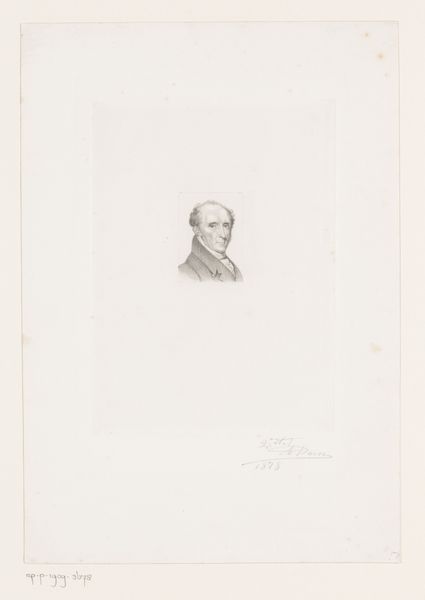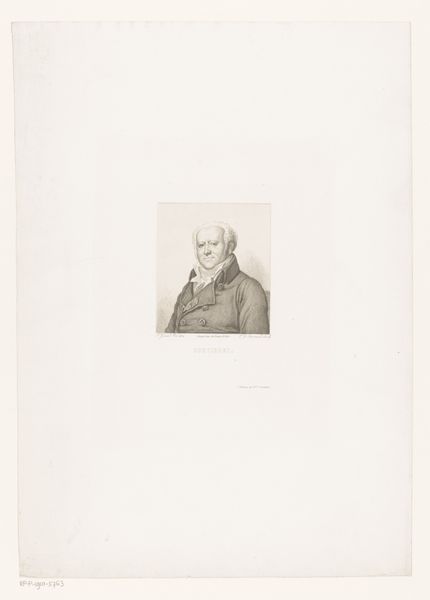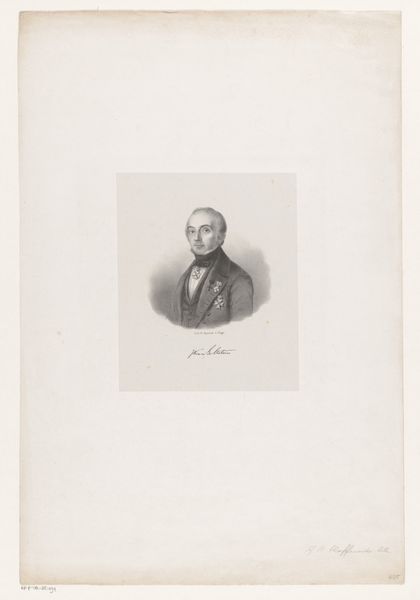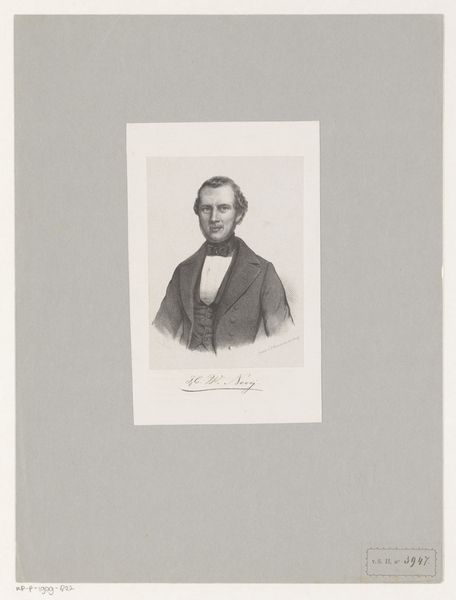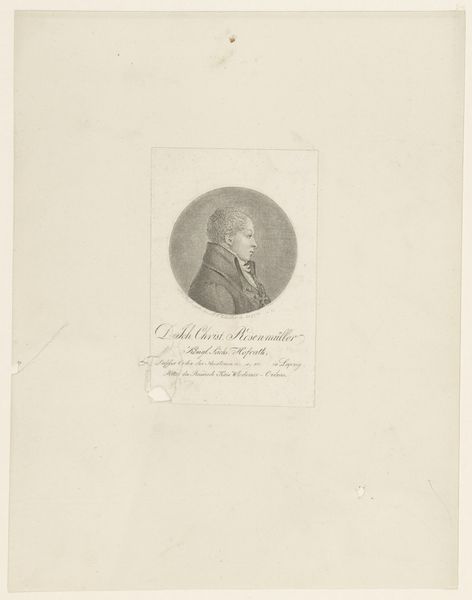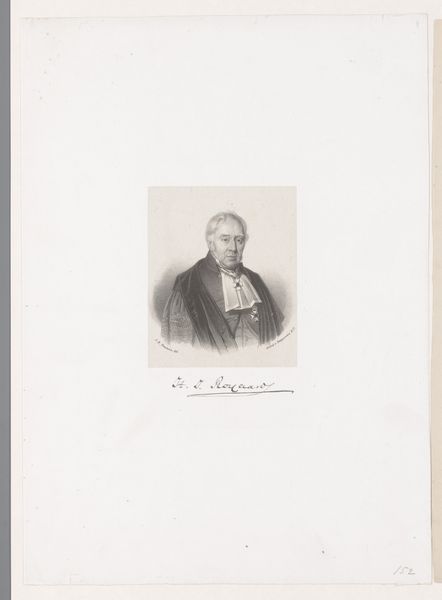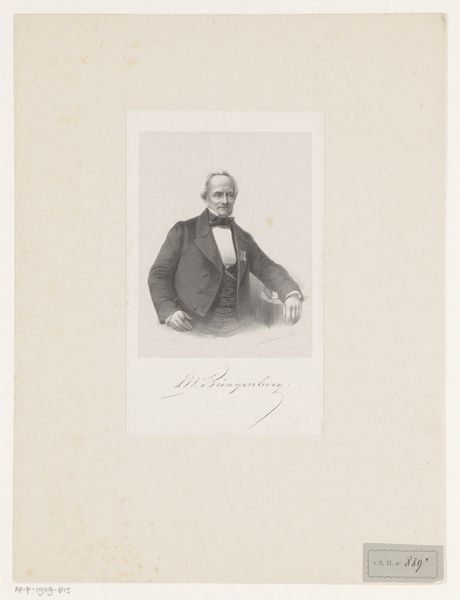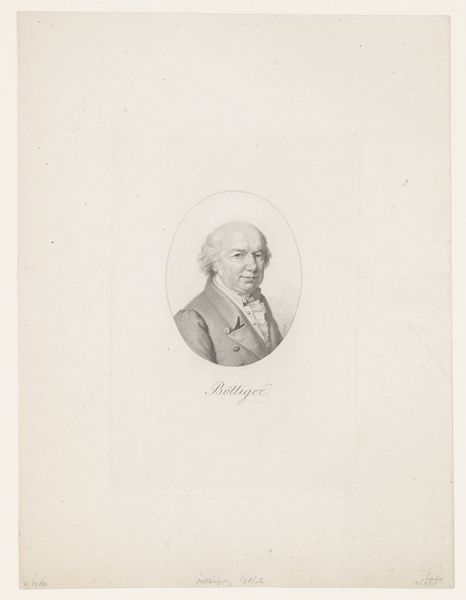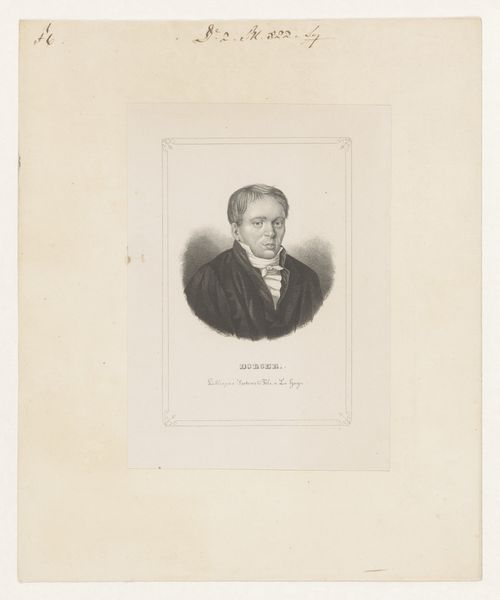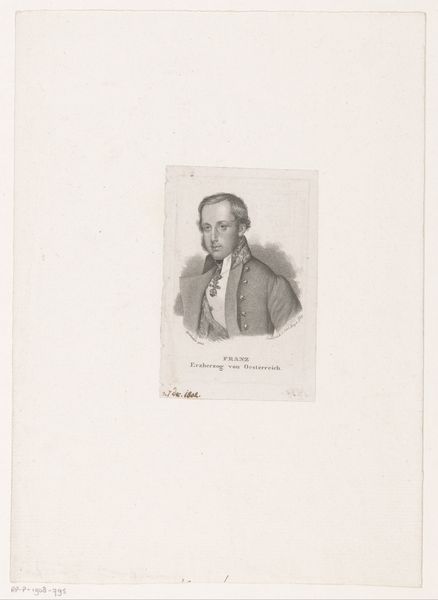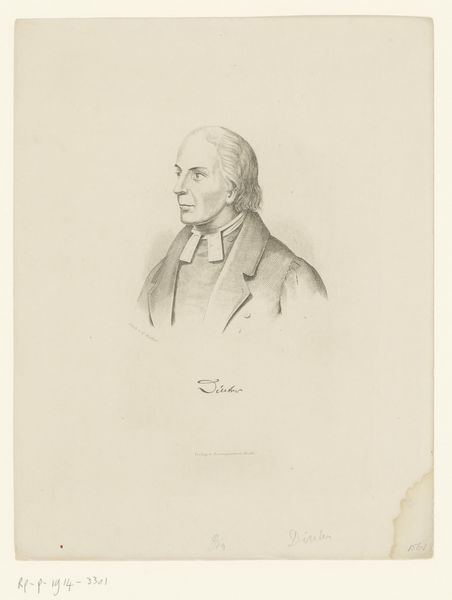
#
portrait
# print
#
old engraving style
#
pencil drawing
#
realism
Dimensions: height 265 mm, width 215 mm
Copyright: Rijks Museum: Open Domain
Curator: Allow me to introduce you to an 1872 print by Johannes Arnoldus Boland, titled "Portret van Willem Gerard Brill." Editor: It possesses a rather stark, almost ghostly quality, doesn’t it? The heavy reliance on light and shadow gives the subject a sense of being both present and distant. Curator: Indeed. Boland's technical mastery is evident in the delicate linework, characteristic of prints produced in this era. Observe how the precise etching captures subtle textures and forms to give the image definition. Editor: I'm intrigued by its social function as an easily reproducible and thus more broadly accessible portrait of a person likely of certain societal standing. Who was Brill? Curator: Willem Gerard Brill was a Dutch author and literary critic of the nineteenth century, so that likely explains the distribution and social necessity. It is quite clear how prints allowed for a democratization of representation. Editor: It's fascinating to consider how this medium contributes to shaping public perception and individual identity. Notice also the careful construction of the subject’s pose, his composed gaze creating a sense of self-importance or authority, typical of its period. Curator: Undoubtedly. Yet, I’m drawn to the tonal gradations, the skillful way in which Boland manipulates light to create depth. I do think that those precise qualities enhance the emotional intensity conveyed here. Editor: Well, from a cultural perspective, this engraving underscores the era’s preoccupation with capturing and disseminating images of public figures and thus promoting intellectual circles of its time. The formal qualities amplify these public roles. Curator: Ultimately, Boland's work not only gives insight into a prominent figure, but also underscores the inherent artistic beauty and refinement attainable in printmaking during the 19th century. Editor: And viewed now, these images are social mirrors. The visual language of this print reflects how 19th century public image worked, and invites us to consider the lasting politics of representation in the modern day.
Comments
No comments
Be the first to comment and join the conversation on the ultimate creative platform.
